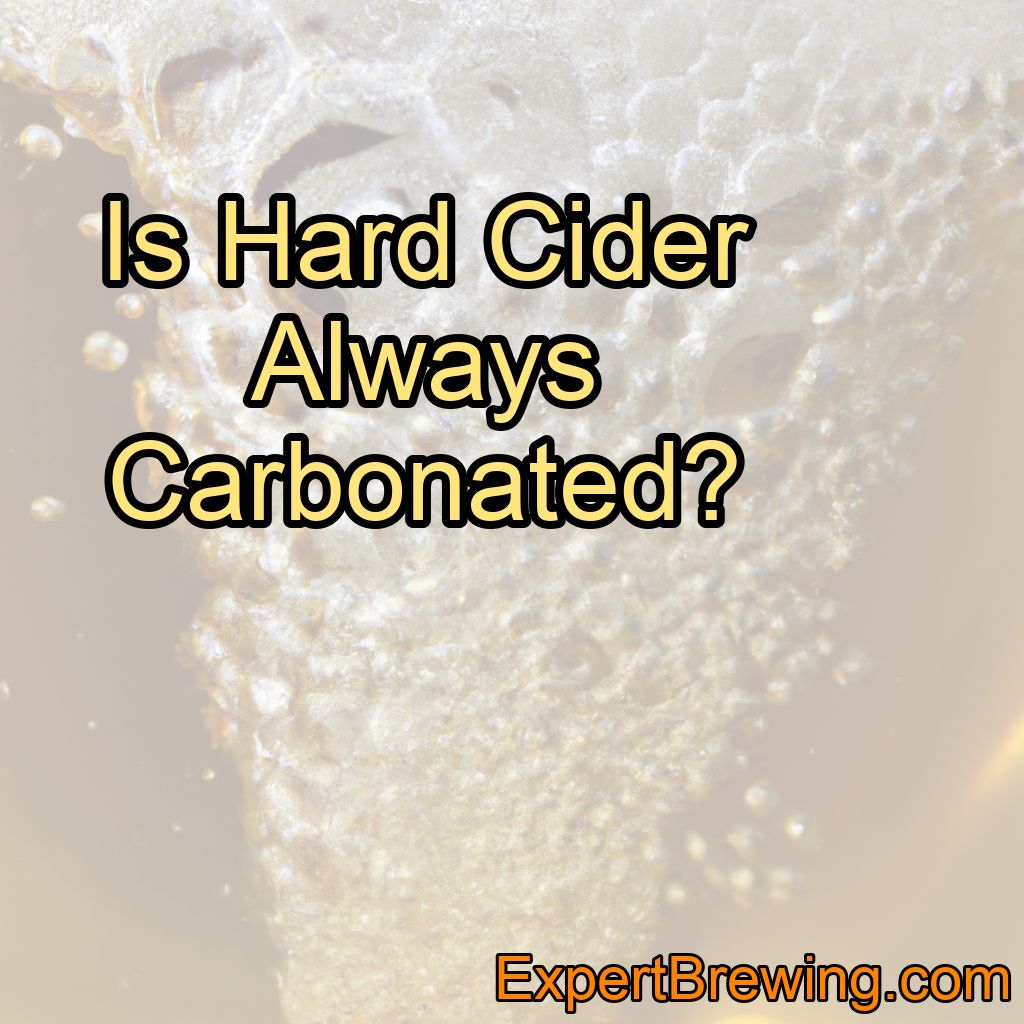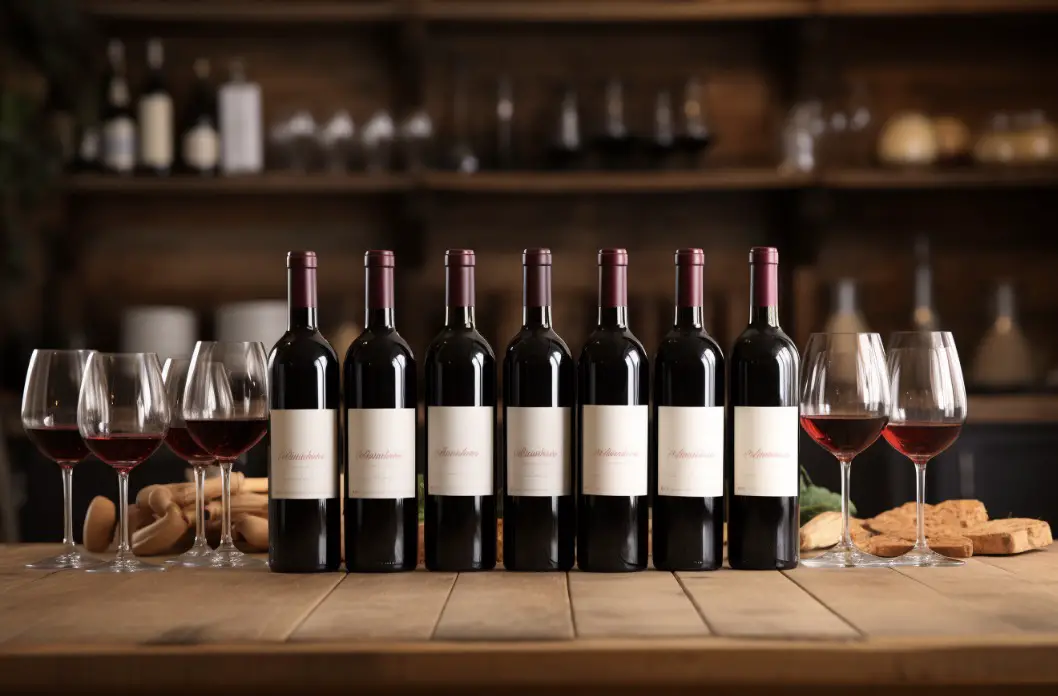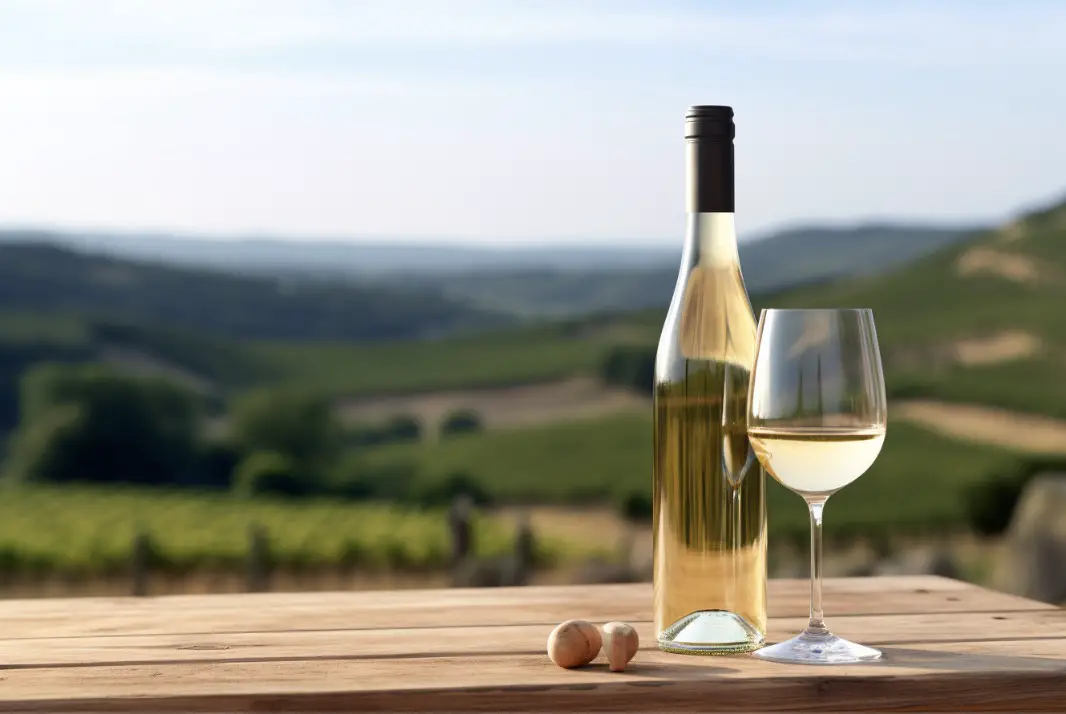Hard cider, a delicious and refreshing alcoholic beverage made from fermented apple juice, has been enjoyed for centuries. It has recently experienced a resurgence in popularity, with many craft cideries opening up and offering a wide variety of styles and flavors. One question that often arises when discussing hard cider is whether or not it is always carbonated. In this blog post, we will dive into the world of hard cider and explore the factors that contribute to carbonation, as well as some of the different styles of cider that are available.
The short answer is no, hard cider is not always carbonated. It can be still (non-carbonated) or sparkling (carbonated). The level of carbonation in a cider depends on the production methods and preferences of the cider maker.
The Fermentation Process
The key to understanding carbonation in hard cider lies in the fermentation process. When apple juice is fermented, yeast consumes the sugar in the juice and produces alcohol and carbon dioxide as byproducts. In the case of still cider, the carbon dioxide is allowed to escape during fermentation, while in sparkling cider, the gas is trapped, resulting in a carbonated beverage.
Natural Carbonation
One way to achieve carbonation in hard cider is through natural carbonation. This can be accomplished by bottle conditioning, where a small amount of sugar is added to the cider before it is bottled. The yeast in the cider consumes this additional sugar, producing more carbon dioxide which becomes trapped in the bottle and carbonates the cider.
Forced Carbonation
Alternatively, cider makers can use forced carbonation to achieve the desired level of fizziness. This process involves injecting carbon dioxide gas directly into the cider after fermentation has been completed. Forced carbonation allows for more precise control over the level of carbonation in the final product.
Still Cider
Still cider, also known as “flat” or “non-sparkling” cider, contains little to no carbonation. This style of cider is often preferred by those who enjoy a more traditional and rustic drinking experience. Still ciders can be rich and full-bodied, with a focus on the natural flavors of the apples used in production.
Traditional English Cider
One of the most well-known examples of still cider is traditional English cider. This style of cider is typically made using a blend of bittersweet and bittersharp apple varieties, which contribute to its distinctive flavor profile. Traditional English ciders can range from dry to sweet and may have a slightly higher alcohol content than other ciders.
French Cidre
French cidre (pronounced “see-druh”) is another example of a still cider. This style of cider is typically made using bitter and sharp apple varieties, which give it a tart and complex flavor profile. French cidres can range from bone dry to semi-sweet and are often enjoyed with meals as an alternative to wine.
Sparkling Cider
Sparkling cider is characterized by its effervescence, which can range from a gentle fizz to a lively, Champagne-like bubble. The carbonation in sparkling cider not only adds an element of refreshment but can also help to lift and accentuate the flavors and aromas of the apples used in production.
Modern Craft Cider
Many of the craft ciders produced today fall into the category of sparkling ciders. These ciders can vary greatly in terms of flavor, sweetness, and carbonation levels, as cider makers experiment with different apple varieties, fermentation techniques, and flavorings. Some craft ciders may even be aged in oak barrels or blended with other fruits or spices to create unique and innovative flavor profiles.
Champagne-Method Cider
Some cider makers choose to produce their sparkling ciders using the traditional Champagne method, also known as “méthode champenoise” or “méthode traditionnelle.” This process involves a secondary fermentation in the bottle, which results in a finer and more persistent bubble than ciders carbonated through other means. These high-quality ciders often command a premium price and are sought after for their elegance and complexity.
Personal Preferences
Ultimately, whether a cider is still or sparkling comes down to the preferences of the cider maker and the consumer. Some people may prefer the rich, unadulterated flavors of a still cider, while others may be drawn to the refreshing effervescence of a sparkling cider. Fortunately, with the growing popularity of craft cider, there is a wide range of styles and flavors to suit every palate.
Conclusion
In conclusion, hard cider is not always carbonated, as it can be found in both still and sparkling varieties. The level of carbonation in a cider is determined by the production methods and preferences of the cider maker. Here are 10 facts about hard cider and carbonation:
1. Hard cider can be still (non-carbonated) or sparkling (carbonated).
2. Carbonation in hard cider is a result of the fermentation process, where yeast consumes sugar and produces alcohol and carbon dioxide.
3. Still ciders allow the carbon dioxide to escape during fermentation.
4. Sparkling ciders trap the carbon dioxide, resulting in carbonation.
5. Natural carbonation can be achieved through bottle conditioning, where a small amount of sugar is added before bottling.
6. Forced carbonation involves injecting carbon dioxide gas directly into the cider after fermentation.
7. Traditional English cider and French cidre are examples of still ciders.
8. Modern craft ciders and Champagne-method ciders are examples of sparkling ciders.
9. The level of carbonation in a cider can impact its flavor, aroma, and mouthfeel.
10. Personal preferences play a significant role in whether a cider is enjoyed still or sparkling.
FAQs
Why did my cider not carbonate?
There could be several reasons why your cider did not carbonate, including insufficient yeast, too much or too little sugar, low temperature, or improper bottling techniques.
Is cider non carbonated?
Cider can be carbonated or non-carbonated, depending on the specific type and style.
Is cider naturally carbonated?
Cider can be naturally carbonated if it undergoes a secondary fermentation process in the bottle or keg, but it can also be carbonated artificially through forced carbonation.
How much carbonation is in hard cider?
The amount of carbonation in hard cider can vary depending on the specific cider and how it was produced, but typically ranges from lightly carbonated to fully carbonated.
Does apple cider have carbonation?
It depends on the specific apple cider product. Some apple ciders are naturally carbonated due to the fermentation process, while others may have added carbonation for a bubbly texture. However, many apple ciders are not carbonated at all and have a still, non-fizzy consistency.
Do you need to carbonate hard cider?
Carbonation is not necessary for hard cider, as there are many styles of cider that are still (non-carbonated). However, many people prefer their cider to be carbonated, and there are methods for carbonating cider, such as bottle conditioning or force carbonation.




